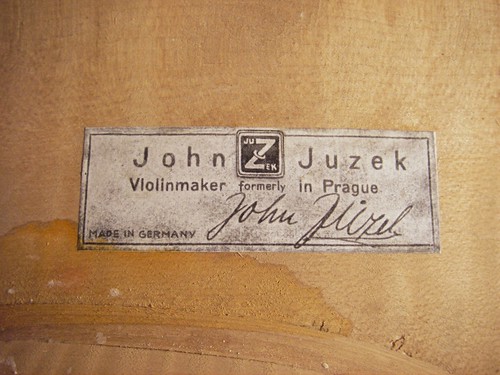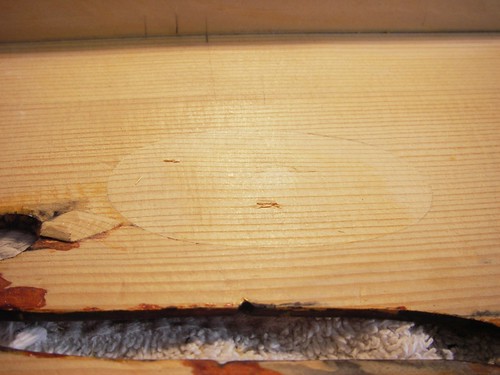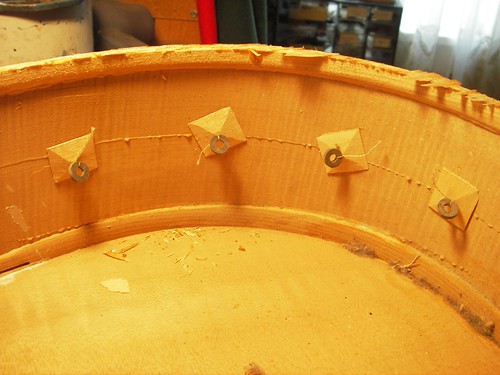This time of year, I see instruments from the local schools that need repair. This is a cello from a middle school. It's been around for years. The label is a photocopy of a Juzek label, and I never know what to think of these. They are common, and I don't know if the Juzek factory did this, or if it's a knock-off. It's not a bad little cello, but it's seen a lot of abuse from middle-school students, which, of course, is one way these students learn.
This cello has had many repairs, including having the top off. This is a fitted patch for a rib crack. Reasonable, if a little thick. I left well-enough alone.
Here is a soundpost patch, nicely done, though with some later damage due to improper soundpost position, and a diamond-shaped cleat to help hold the crack. I suspect the diamond cleat was added without taking the top off, with a clamp through the f-hole, and whoever did it didn't realize there was already a soundpost patch in place.
Here are pyramidal cleats put in on a rib crack, done through the outside. The little 'doughnuts' actually serve to hold a thread. In this method of repair, a hole is drilled through the ribs for each cleat, a wire or thread run through the hole and wiggled out the f-hole, the cleat is then run through it, with the ring to hold it tight. Glue applied to the rib-side surface, it is then pulled back into place against the rib and tied into place until the glue dries. Not recommended. All of these cleats were loose. I removed them and recleated with linen.
So, is this cello worth this amount of repair? Probably not, but I am not charging full rate. I hope it is some contribution to the orchestra program in my area, and that some student will perhaps learn to love playing the cello. At the very least, we will get a few more years out of this little (3/4) cello, and it is actually far nicer than many of the newer 3/4 cellos I've seen in recent years. Many of those are complete junk.
Wednesday, September 18, 2013
Subscribe to:
Posts (Atom)




